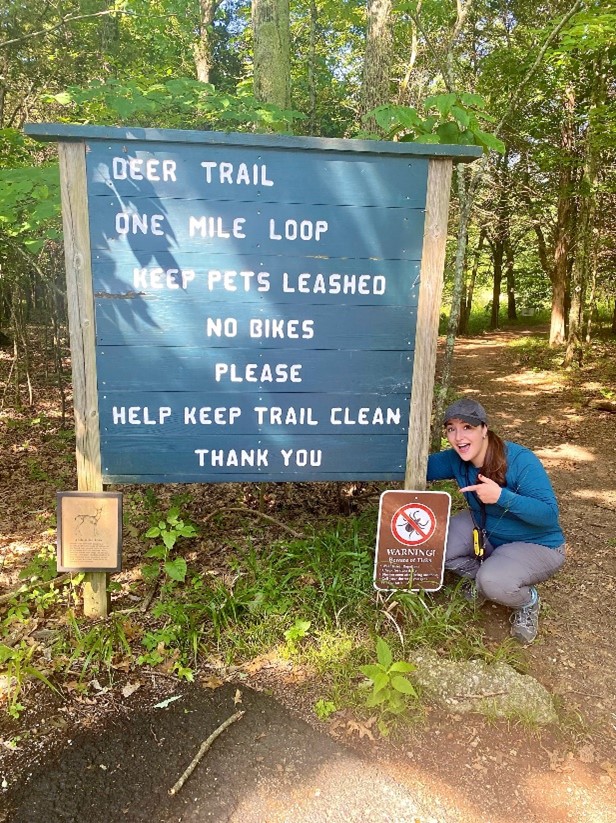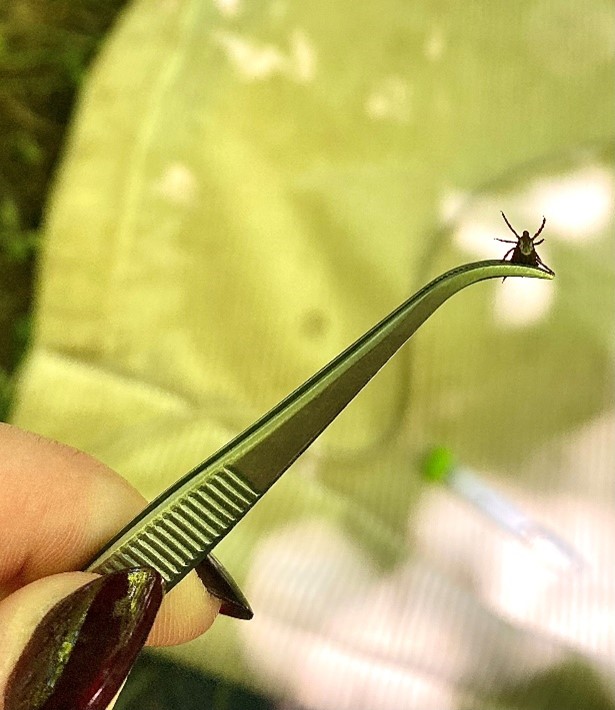Peek Into an MPH Practicum: A Q&A with an Epidemiology Track Student

By Kyra Letsinger
From a young age, second-year Master of Public Health (MPH) student Kaylee Ebner had a passion for health and science. It wasn’t until high school, however, that she came to find her dream career path in the most unlikely of places. In her junior year Intro to Healthcare class, she watched the film Contagion, a fictional thriller film that depicts the onset of global pandemic, and was enthralled by the variety of health care careers represented outside of just physicians and nurses. Life would soon imitate art when the COVID-19 pandemic hit during Ebner’s first year of college at the University of Wisconsin-Madison. She watched as public health professionals around the world worked diligently to restore health and safety worldwide, an experience that confirmed the interest her high school experience had sparked years ago: she wanted to pursue a career in public health.
Inspired by the teachings of two of her undergraduate professors, epidemiologists Dr. Patrick Remington and Dr. Marty Kanarek, Ebner began looking into MPH programs with a focus on epidemiology. At Vanderbilt University School of Medicine, she found an MPH program with a specialized epidemiology track and a close-knit MPH cohort that provided one-on-one mentorship and experiential learning opportunities. The most impactful of her real-world learning opportunities is the MPH required public health practicum, a supervised real-world public health experience that allows students to utilize their classroom skills and further explore their career interests in a supervised, professional public health setting. For her practicum experience, Ebner worked with the Tennessee Department of Health (TDH) in the Vector-Borne Diseases program (SECVBD). With this project, she has examined the intersection between health, humans, and the environment while conducting research on tick-borne illness, ultimately deepening her passion for infectious disease epidemiology.
What is your specific practicum project?

I have worked on two projects in collaboration with SECVBD, acting as the project lead for Tennessee. The first study involved a Tick-Bot, a remote-controlled car that has a cloth drag attached to the back that is treated with permethrin, a chemical that kills ticks. We conducted our first study for four weeks at Long Hunter State Park in Hermitage, TN. We had 2 treatment trails and 2 control trails, all 100m long, and each day we would drag all our trails (a large cloth on a dowel rod) over the vegetation. Ticks seeking a host (this is called questing in the tick world) would then crawl onto the drag thinking it was a potential host, allowing us to collect them. Then, if a treatment trail triggered, the Tick-Bot would be run on the trail, treating the vegetation off the trail with the Permethrin. This project aimed to test the Tick-Bot as a potential vegetation management strategy to reduce tick populations in high-use areas. Additionally, it allowed us to gain a better understanding of the prevalence and diversity of ticks in this area.
The second project focused on comparing the effectiveness of two CO2 traps for capturing ticks. The standard trap uses a muslin cloth with adhesive tape and dry ice, while the Banfield Bio trap features a raised plastic bowl with a sticky cardboard square and dry ice. As the dry ice sublimates, it produces CO2, mimicking the breathing of a host (such as an animal or human) and attracting ticks. This study aims to determine which trap is more effective and whether CO2 traps can used as an alternative strategy to mitigate tick populations and protect those enjoying the outdoors.
What does the day to day look like in this placement?
Some days I am in the lab identifying tick by species and sex under the microscope and recording data. Sometimes, I do data analysis and communicate with our SECVBD partners. My favorite days are when we are out in the field at Long Hunter State Park. I am usually dressed head to toe in my permethrin-treated pants, long-sleeved shirt, and well-loved hiking boots with the long socks that I tuck my pants in. I am usually quite sweaty since I am a northerner not quite adjusted to Tennessee’s heat and humidity, but I still love being able to have my “office” in the field!
While tick collecting is a bit exhausting, I really enjoy it and view it as a bit of a game. It takes skill to be able to spot ticks the size of poppyseeds and collect them and identify them. It also is very fulfilling to be able to make a tangible difference in protecting the health and safety of Tennesseans by understanding and reducing tick populations on popular hiking trails.
One of my favorite parts of my practicum has been talking to and educating hikers on the trails where we do fieldwork. People commonly stop and ask us what we are doing. When we tell them about work we do to mitigate tick populations and tick-borne illnesses, folks always are genuinely interested and appreciative which is so rewarding to me. We also act as myth busters sometimes. There are a lot of tick myths that are still commonly spread, such as removing ticks using a lighter/Vaseline or the idea that ticks jump down from trees. We have been able to educate and correct these ideas when talking to hikers, which goes to show the continued importance of educating the public on tick safety.

What made you choose this placement?
I have always loved the outdoors! Something I really wanted in a practicum was a placement that would allow me to get outside of the office and my computer and do hands-on work. My favorite classes in undergrad were Parasitology and Pathogenic Bacteriology, which covered vector-borne diseases and really fascinated me. I find the idea of One Health (the overlap of health, humans, and the environment) to be very important, so the idea of these projects centering on the environment, ticks, and public health really drew me in. Additionally, being from Wisconsin, tick-borne illnesses are very prevalent so I always sort of had a fear of ticks and had lots of exposure to them as a child. The idea of working with ticks and being in the field was a bit out of my comfort zone but so interesting to me, so I am very glad that I did this practicum as I have a new-found appreciation and respect for ticks.
How did you find out about this opportunity?
I found this opportunity through Dr. Brad Hawkins, the MPH practicum director. I had expressed that I wanted a practicum placement that was outdoors and hands on and he connected me with SECVBD Program Director Dr. Abelardo Moncayo! In early May, I had the opportunity to attend the SECVBD’s Tick University at the University of South Carolina where I learned about these projects that I worked on!
What’s next for this project?
We are still wrapping up our CO2 trap study currently. In the early fall, all of the ticks that we collected (over 1,000 from just the Tick-Bot study) will be tested for a variety of pathogens including spotted fevers, Ehrlichiosis, and Lyme disease which will help us further understand the prevalence of these pathogens and the risk that they pose to Tennesseans.
How do you feel this experience has benefitted you as a public health professional in training?
This experience has benefitted me immensely! I have loved exploring another field of infectious diseases and working with TDH and Dr. Moncayo. It certainly has reinforced my interests in One Health and infectious disease epidemiology. Importantly, it has allowed me to directly apply the skills that I have learned in the classroom to the field of public health. For example, the regression analyses and Stata coding that I learned in Biostats, I have used in my analysis of the data we collected on our Tick-Bot study. I have had the opportunity to practice the scientific writing skills that I have learned in Epidemiology I and II and Protocol Development to communicate with our SECVBD partners. During my practicum, I also learned how to use Tableau which is a data visualization software. From this, I realized the importance of communicating public health findings in an efficient and understandable way.
Now accepting applications for the Class of 2027 cohort, learn more about Vanderbilt’s Master of Public Health program and the Epidemiology Track.
